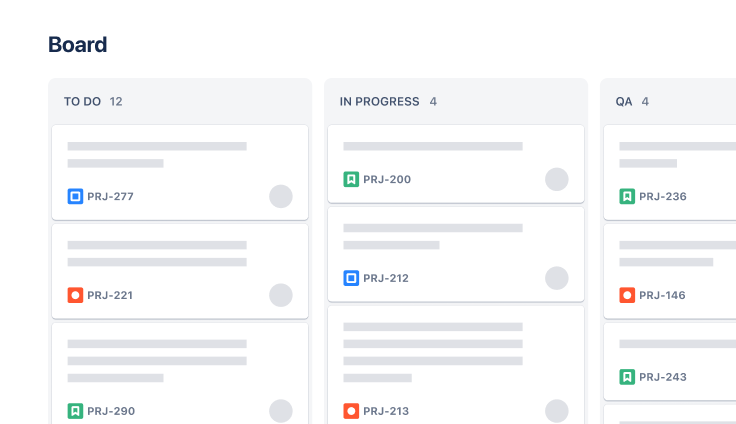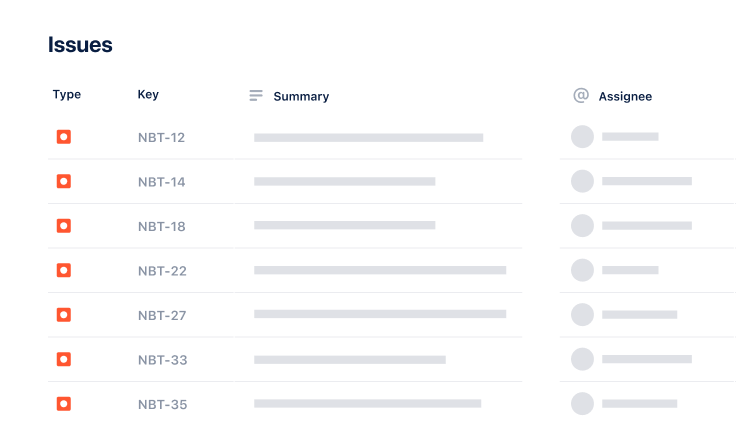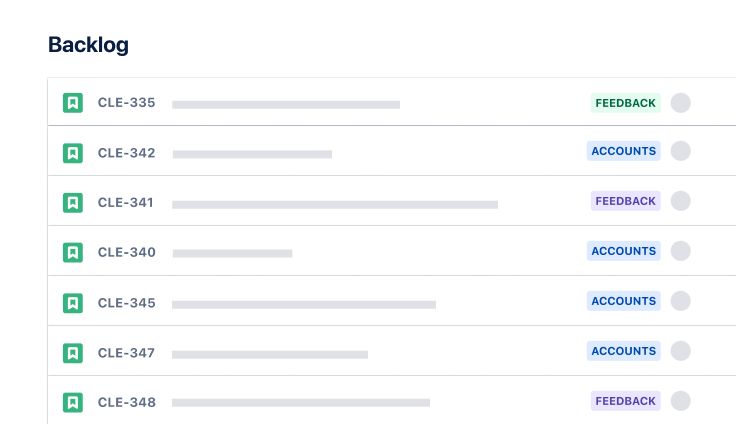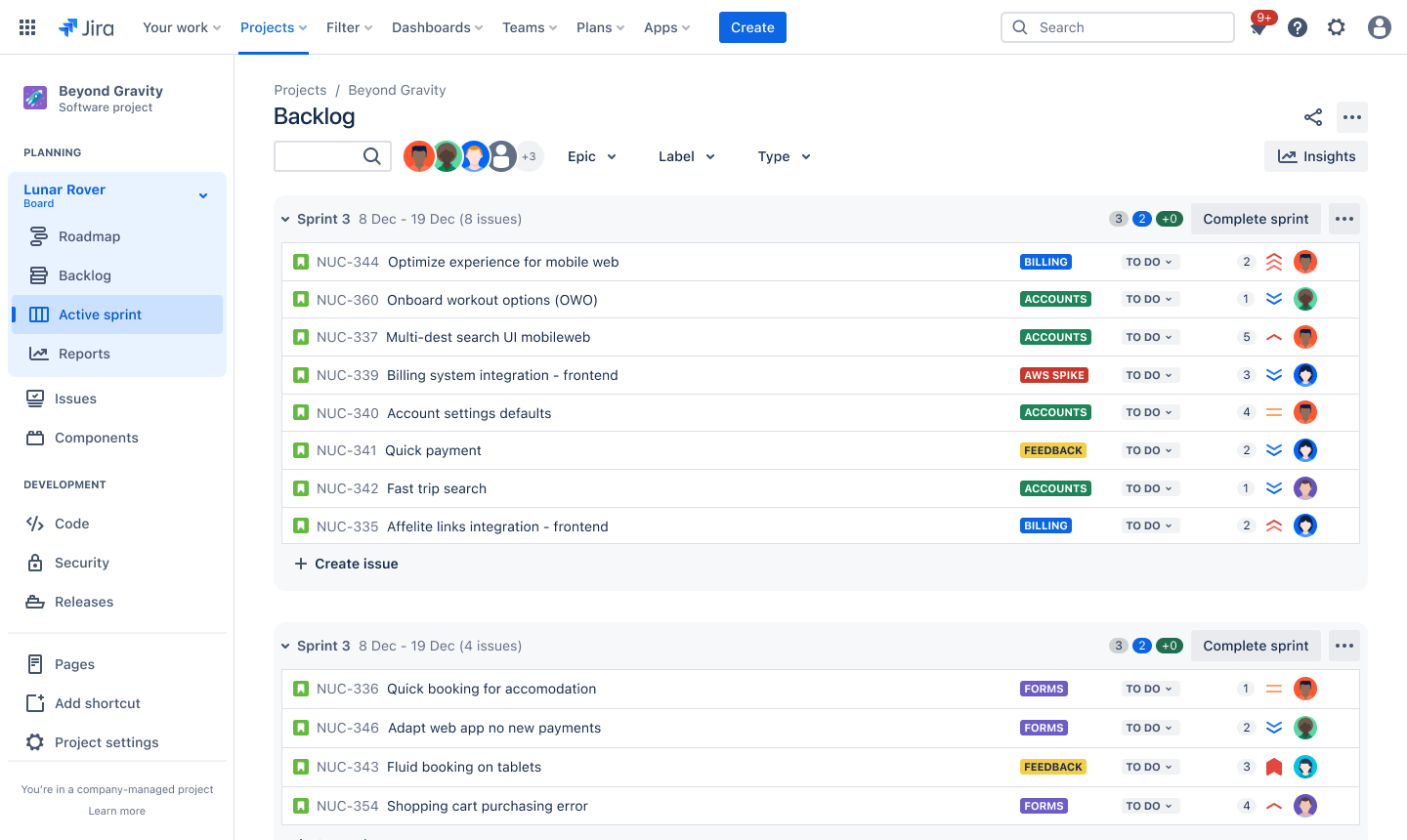
Product backlog template
Streamline task management and prioritization with Jira’s customizable product backlog template.
best for
Project management
key features
Task planning
Prioritization
Pipeline management
What is a product backlog template?
A product backlog template is a standardized, reusable format in which product development teams can list their tasks, such as features to be added, for future development. If your team follows the Agile project management methodology, a product backlog informs the roadmap for your work.
Prioritization framework
A product backlog template helps teams prioritize tasks based on business value and urgency. This structured approach to prioritization ensures that your team works on the most critical items first, maximizing productivity and delivering value faster. During spring planning, this framework helps teams select the right items to work on next.
Enhanced consistency
A product backlog template gives teams a consistent structure for organizing and tracking tasks across a project. As an essential part of Agile project management, the backlog template ensures everyone understands how to document and format tasks, making it easier to maintain clarity across the entire team. With Jira’s free product backlog template, you have a standardized approach that helps maintain consistency and reduce confusion.
What does the product backlog template include?
Sprint backlog
The sprint backlog feature focuses on immediate tasks for the current iteration, helping teams maintain clear short-term objectives. This focused view keeps everyone aligned on what must be accomplished during active or upcoming sprints.
Teams can adapt the backlog to match their preferred workflow by following strict Agile methodologies or a hybrid approach. By maintaining a comprehensive backlog, teams get complete visibility into the project scope while focusing on immediate priorities.

Roadmap
Jira’s roadmaps (aka Timelines) help teams plan work and track progress in a single view to prioritize effectively and pivot quickly. This visualization helps connect individual user stories to larger objectives and track progress toward major milestones or an epic.

Insights
The Sprint progress insights view gives teams real-time visibility into their current sprint's performance and momentum. Project managers can quickly assess the pace and identify potential bottlenecks without digging through complex reports. This immediate feedback helps teams optimize their workload and refine their story points estimations for future planning, leading to more accurate and achievable sprint goals.
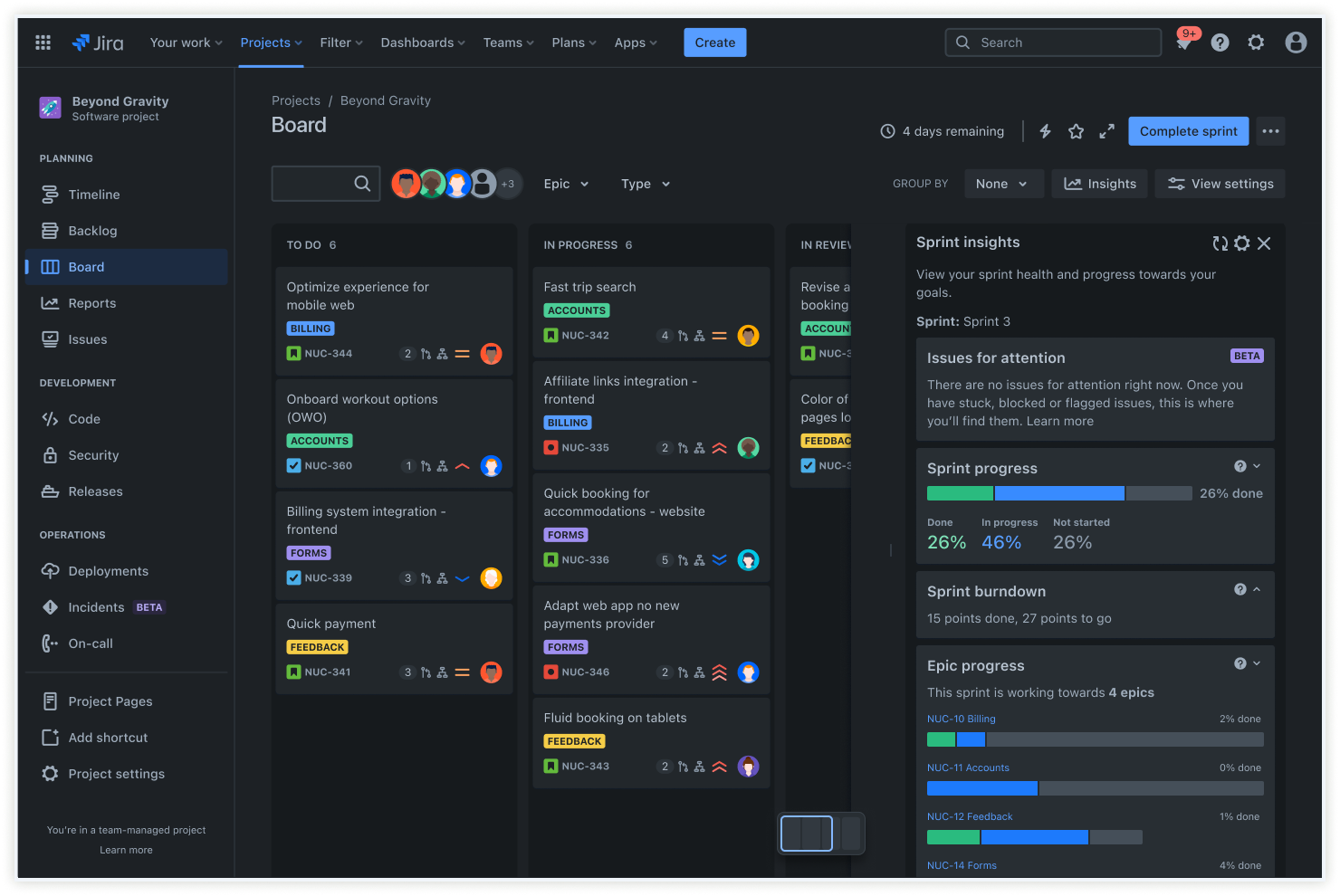
Kanban board
A Kanban board is a project management tool teams use to plan, visualize, and track work. Jira's Kanban board promotes continuous delivery by helping teams define workflows and manage bottlenecks. Jira offers Scrum and Kanban templates to make it easy for teams to start practicing agile methodologies.

